AS YOU WERE . . .
WAR YEARS ECLECTICA :: APRIL 2023
2023.04 Edition
|
celebrated Canada's 150th Birthday in 2017 by creating 150 illustrated vignettes for Brandon's BCATP Museum site. When the museum suddenly changed their Website all this work was trashed, along with all of my +20 years work (2,000 Webpages) created as a volunteer Webmaster and host for their site. Fortunately I had paid for all their Web hosting charges on my personal server, so I'm gradually giving the pages new life, but after having to change countless thousands of links. |
Canada 150 Vignette Series
British Commonwealth Air Training Plan Vignettes
PART X: Nos. 46-50
By Greg Sigurdson (1955 - 2023) and Bill Hillman
www.hillmanweb.com/150CONTENTS
46. No. 15 Service Flying Training School - Claresholm Alberta
47. Training: Claresholm AB BCATP Casualties
48. A World War II Memory - Sam and Glen Merrifield
49. Aircraft - The Westland Lysander
50. Partners - Royal New Zealand Air Force (RNZAF)Continued in PART XI: Nos. 51-55Many of the illustrations may be clicked for full screen size.
046 of 150
BCATP Schools: No. 15 Service Flying Training School - Claresholm AlbertaNo. 15 Service Flying Training School was located in Claresholm Alberta and was open for 1390 days between June 9 1941 and March 30 1945. No. 2 Flying Instructor School was located there between April and September 1942 before if was moved to Vulcan Alberta. Both schools were staffed and run by the Royal Canadian Air Force.
No. 15 SFTS utilized Avro Anson and Cessna Crane aircraft for training students to become pilots in multi-engine bomber, coastal patrol and transport aircraft. In early 1942, there were 47 Ansons and 70 Cranes on site. Students spent 16 weeks at this school where they would be attached to an intermediate training squadron of eight weeks and then on to advanced training for another six weeks. To complete their SFTS training, students would spend their final two weeks at a Bombing & Gunnery School. Classes at No. 15 SFTS graduated every four weeks. In January 1944, Claresholm was home to 126 Staff Officers, five Women’s Division Officers, 722 Airmen, 204 Airwomen, 296 students and 75 civilians. The first Women’s Division members (62) arrived at Claresholm in February 1942 to assume roles in administration and operations of the school.
In October 1941, the Duke and Duchess of Windsor toured No. 15 SFTS. The Duke presented wings to students graduating the third class. In May of 1943, the school was visited by another luminary - the Earl of Athlone (Governor General of Canada) and his wife Princess Alice. The Governor General presented wings to the graduates of Class 74.
Course numbers 121 and 122 were the final of 35 classes which graduated approximately 2000 students in the nearly four years that Claresholm was open for business.
Claresholm as No. 15 Service Flying Training School had five large hangars plus support buildings which were erected by the Bennett & White Construction Company. According to the Claresholm Museum web site, this company assembled the frame for each hangar in seven hours and 45 minutes. Claresholm was also home to the RCAF Reserve Equipment Maintenance Satellite which serviced Avro Anson aircraft in two large hangars attached to the school grounds. Two of the No. 15 hangars and the satellite hangars exist today and provide aviation services at the airport
The station magazine for No. 15 Service Flying Training School in Claresholm was "Windy Wings" which was published regularly while the school was open.
The Claresholm RCAF base was put into mothballs in 1945 until 1951 when is reopened as a NATO training school under No. 3 Flying Training School. It closed again in 1958 when the flying training school was transferred to Gimli Manitoba. No. 15 SFTS is now the site of the Claresholm Industrial Airport.
A tribute to No. 15 Service Flying Training School and the people who served there has been erected in Centennial Park in Claresholm. It is a Harvard aircraft mounted on a pedestal. A memorial plaque honoring the commanding officers and those who were killed at the school has been located in Claresholm – more about this in a future vignette.
We offer special thanks to the Bomber Command Museum in Nanton Alberta and the Claresholm Museum for information and photos provided for this vignette.
http://www.bombercommandmuseum.ca/bcatpclaresholm.html
http://www.claresholmmuseum.com/about/history/
https://en.wikipedia.org/wiki/RCAF_Station_Claresholm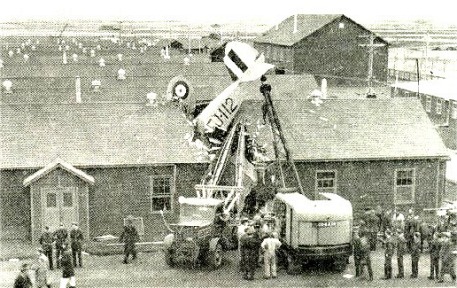
047 of 150
BCATP - Training: Claresholm AB BCATP Casualties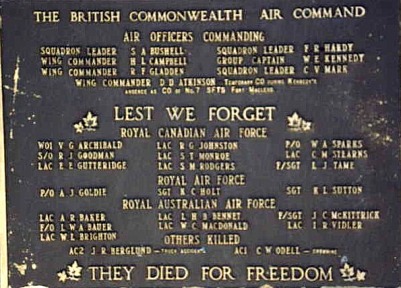
When you look at the inscription on a memorial, cairn or grave stone, you just know that there is much more to the story of the person, place or event depicted. The internet has had a dramatic effect on our ability to find more about the stories but frequently the information is still not available on the net. That is when we resort to good old fashioned sources – like books. In the case of Royal Canadian Air Force operational and training fatalities during World War II, an authoritative source of information is the Commonwealth Air Training Plan Museum’s memorial book "They Shall Grow Not Old."In our previous Canada 150 vignette, we talked about RCAF operations at No. 15 Service Flying Training School at Claresholm Alberta during World War II. Inspired by a picture of a memorial plaque in the Town of Claresholm as seen on the Bomber Command web site while researching the first vignette, we will see what kind of stories we can find behind the names on the plaque using the memorial book and Bomber Command Museum web site from which, stories were copied verbatim.
"The British Commonwealth Air Command"
A close examination of the Claresholm memorial plaque reveals the following names. At the top, the Commanding Officers of No. 15 SFTS Claresholm are listed. They were Squadron Leader S.A. Buswell, Wing Commander N.L. Campbell, Wing Command R.F. Gladden, Squadron Leader F.R. Handy, Group Captain W.E. Kennedy and Squadron Leader C.V. Mark. The name of a temporary commander at No. 17 SFTS Fort McLeod Alberta, Wing Commander D.D. Atkinson, is also included.
Next on the plaque are the names of fatalities from No. 15 SFTS Claresholm or those with a connection to Claresholm. They are listed by nationality on the plaque – Canada, Australia, New Zealand and other. We do not follow the order listed on the plaque to match fatalities where multiple fatalities occurred with one accident. Comments from the Bomber Command web page are included in italics and brackets where available.
Multiple Fatalities WO1 V.G. Archibald / ARCHIBALD, VIVIAN GORDON HARRIS WO1(P) R62035.
From North Battleford, Saskatchewan. Killed Feb.7/45 age 29. #15 Service Flying Training School, Claresholm, Alberta.WO. Archibald and P/O. A.J. Goldie (RAF) were both killed whenAnson aircraft # FP 845 caught fire and crashed three and one half miles east of the aerodrome at Claresholm. Warrant Officer Class 1 Pilot Archibald is buried in the North Battleford Cemetery at North Battleford, Saskatchewan.
P/O A.J. Goldie – listed as Royal Air Force in the memorial book and on the plaque.
(Goldie, Pilot Officer Adrian James; Royal Air Force; Service No. 188945; Age: 19 - Wednesday February 7, 1945 Pilot Officer Goldie, was the pilot of an Anson departing Claresholm at 09:00, on a training flight. Shortly after take-off the Anson caught fire, control was lost and it crashed 3-1/2 miles east of the airport.)
Single fatality.
S/O R.J. Goodman / GOODMAN, ROSE JETTE S/O V30156. From New Glasgow, Nova Scotia. Killed Jan.26/43, age 23. GOODMAN, Cessna Crane aircraft 8739 was on a cross-country flight from Lethbridge to Claresholm when it crashed eight miles south-east of the aerodrome at Claresholm. S/O. Goodman was the only casualty and she was the first member of the Women’s Division of the Royal Canadian Air Force to lose her life on active service. Section Officer Goodman is buried in the Outremont Hebrew Cemetery, Montreal, Quebec.
Multiple aircraft / Multiple fatality accident involving Gutteridge, Johnston, MacDonald and Sterns
LAC E.E. Gutteridge / GUTTERIDGE, EDWARD ERNEST LAC(P) R121025 - under training. From Calgary, Alberta. Killed Jul.8/42, age 22. GUTTERIDGE, Cessna Crane aircraft 8743 and Cessna Crane aircraft 8669 were engaged in a cross-country formation flying training exercise when they were in a mid-air collision. The aircraft crashed seventeen miles east of Carmangay, Alberta. LAC.s E.E. Guttridge and
HomeR.G. Johnston were killed in aircraft 8669, LAC.s W.C. MacDonald and C.M. Stearns were killed in aircraft 8743. Leading Aircraftman Pilot Gutteridge is buried in the Burnside Cemetery at Calgary, Alberta.
LAC R.G. Johnston / JOHNSTON, ROBERT GUTHRIE LAC(P) R122066 - under training. From Vancouver, British Columbia. Killed Jul.8/42 age 19. #15 Service Flying Training School, Claresholm, Alberta. Cessna Crane aircraft crashed. Please see Stearns C.M. for casualty list and flight detail. Leading AirCraftman Pilot Johnston is buried in the Mountain View Cemetery at Vancouver, British Columbia.
LAC C.M. Stearns / STEARNS, CLAUDE MACDONALD LAC(P) R131519 - under training. From Calgary, Alberta. Killed Jul.8/42 age 22. #15 Service Flying Training School, Claresholm, Alberta. Cessna Crane aircraft # 8743 and Cessna Crane aircraft # 8669 were engaged in a cross-country formation flying training exercise when they were in a mid-air collision. The aircraft crashed seventeen miles east of Carmangay, Alberta. LAC.s E.E. Guttridge and R.G. Johnston were killed in aircraft # 8669, LAC.s W.C. MacDonald and Stearns were killed in aircraft # 8743. Leading AirCraftman Pilot Stearns is buried in the Burnsland Cemetery, Calgary, Alberta.
LAC W.C. MacDonald – Royal Australian Air Force.MACDONALD LAC(P) R131519 - under training. From Calgary, Alberta. Killed Jul.8/42 age 22. #15 Service Flying Training School, Claresholm, Alberta. Cessna Crane aircraft # 8743 and Cessna Crane aircraft # 8669 were engaged in a cross-country formation flying training exercise when they were in a mid-air collision. The aircraft crashed seventeen miles east of Carmangay, Alberta. LAC.s E.E. Guttridge and R.G. Johnston were killed in aircraft # 8669, LAC.s W.C. MacDonald and Stearns were killed in aircraft # 8743. Leading AirCraftman Pilot Stearns is buried in the Burnsland Cemetery, Calgary, Alberta.
Insufficient information.
LAC S.T. Monroe or Morrow is shown on the plaque – it is a bit of a mystery as there is no mention on the Bomber Command web page and entry for these names at Claresholm in the memorial book. There is a Hugh Francis Morrow who was killed in Europe and was trained at Claresholm.
Solo fatality.
LAC S.M. Rodgers / RODGERS, SAMUEL MURRAY LAC(P) R109115. From Calgary, Alberta. Killed Feb.23/42 age 19. #15 Service Flying Training School, Claresholm, Alberta. LAC. Rodgers was flying his Cessna Crane aircraft # 8747 in solo formation practise when he broke formation without apparent reason. He circled low and then crashed one and one half miles north of Parkland, Alberta. Leading Aircraftman Pilot Rodgers is buried in the Burnside Cemetery at Calgary, Alberta.
Single aircraft - multiple fatality accident
P/O W.A. Sparks / SPARKS, WILMOT ARTHUR P/O(P) J44567. From Saskatoon, Saskatchewan. Killed Aug.28/44 age 31. #15 Service Flying Training School, Claresholm, Alberta. P/O. Sparks and F/O. L. Bauer (RAAF) were engaged in aerobatics when their Harvard aircraft # FH 128 went into a dive at 3,000 feet. The aircraft did not come out of the dive and both airmen were killed when they crashed six miles east of Stavely, Alberta. Pilot Officer Pilot Sparks is buried in the Regina Cemetery at Regina, Saskatchewan.
F/O L. Bauer was Royal Australian Air Force.
(Bauer, Flying Officer, Louis Walter Allan; Royal Australian Air Force; Service No. 437247; Age: 29 - Monday August 28, 1944 Flying Officer Bauer and Pilot Officer A.W. Sparks of Saskatoon, SK died when their Harvard trainer crashed 6 miles east of Stavely. The body of Pilot Officer Sparks was returned to Saskatoon.)Single aircraft – multiple fatality accident
F/S L.J. Tame / TAME, LESLIE JOHN FS R166793. From Vancouver, British Columbia Jan.21/45 age 35. #15 Service Flying Training School, Claresholm, Alberta. FS. Tame was a Link Trainer Instructor and was killed when Anson aircraft 8627, engaged in a low level navigation exercise, collided with a ferry cable which was suspended 25 feet above the ice. The aircraft crashed onto the river ice ten miles south of Bassano, Alberta also killing P/O. K.L. Sutton (RAF) and LAC. I.R. Vidler (RAAF). Flight Sergeant Tame is buried in the Mountain View Cemetery at Vancouver, British Columbia.
P/O K.L. Sutton was Royal Air Force. – (Sutton, Pilot Officer Kenneth Leslie; Royal Air Force; Service No. 195512; Age:21 - Sunday January 25, 1945 LAC Vidler, Pilot Officer Sutton, and Flight Sergeant L.J. Tame of Vancouver, died when their aircraft struck a ferry cable over the Bow River near Bassano. The body of Flight Sergeant Tame was returned to Vancouver.)
LAC I.R. Vidler was Royal Australian Air Force - (Vidler, Leading Aircraftsman Ian Robert; Royal Australian Air Force; Service No. 118598; Age: 20)
RCAF not on plaque but in memorial book and Bomber Command web site
MCHARDY, MALCOLM SGT(P) R86572. From Lac La Biche, Alberta. Killed Aug.7/44 age 25. #1 Air Observer School, Malton, Ontario. Sgt.s M. McHardy and W.I. Bruce were assigned to Anson aircraft W 1729 and were engaged in mutual instrument practise when they crashed two miles north of Markham, Ontario. Both airmen were killed in the crash. Sergeant Pilot McHardy is buried in the Claresholm Cemetery at Claresholm, Alberta.
(McHardy, Sergent Malcolm; Royal Canadian Air Force; Service No. R/86572; Age: 25 - On Monday August 7, 1944 at 09:30 AM, Sergeant McHardy, was on routine instrument practise from AOS #1 Malton, ON. (Air Observer School) with Sergent W.J. Bruce RCAF. Weather was clear with unlimited visibility when there was an explosion in their Anson followed by the aircraft breaking up in the air. Both pilots were killed instantly.)
Royal Air Force
Sgt. N.C. Holt – no information in memorial book.
(Sunday April 26, 1942 Pilot Officer Holt, originally from Horfield, Bristol, England, arrived in Claresholm from S.F.T.S. 35 in North Battleford, SK. - On Wednesday April 29, at 10:30 AM, while in the front seat of a Tiger Moth, accompanied by Pilot Officer Jamieson RAF in the rear seat, the aircraft went down out of control from a height of about 350 feet, seven miles East of Stavely. P.O. Jamieson recovered from his injuries, and P.O. Holt was dead at the scene.)Royal Australian Air Force
LAC A.R. Baker – no information in memoria book.
(Baker, Leading Aircraftsman Alwyn Royce; Royal Australian Air Force; Service No. 439637; Age: 19) -
On Thursday July 20, 1944 the Anson aircraft carrying the three Australians (F/S McKittrick, LAC Bennett and LAC Baker crashed 2-1/2 miles northeast of Arrowwood. Cause of accident was investigated but the outcome wasn’t reported.LAC W.L. Brighton – no information in memorial book.
(Brighton, Leading Aircraftsman William Lawrence; Royal Australian Air Force; Service No. 427842; Age:22 - Saturday October 30, 1943 LAC Brighton was on a solo cross country flight the aircraft crashed in the Arrowwood area.)AC2 J.R. Berglund – no information in memorial book.
LAC I.H. Bennet – no information in memorial book.
(Bennett Leading Aircraftsman, Leon Herbert Bernard; Royal Australian Air Force; Service No. 439559; Age: 19)F/S J.C. McKittrick – no information in memorial book.
(McKittrick, Flight Sergeant Jack Curtis; Royal Australian Air Force; Service No. 422869; Age: 23)Others – unable to make-out country name on plaque.
ACR J.R. Berglund – no information in memorial book.
ACI C.W. Odell – no information in memorial book.
Not listed on the plaque but reported in the Bomber Command web site and reported in the memorial book
LOCKHART, JOHN LAC R81706. From Cardross, Dunbarton, Scotland. Died Jul.5/42 age 33. #15 Service Flying Training School, Claresholm, Alberta. Death by drowning in Willow Creek, near Claresholm, Alberta. Leading AirCraftman Lockhart is buried in the Claresholm Cemetery, Claresholm, Alberta.
(Leading Aircraftsman Lockhart was born in Cardross Dunbartonshire, Scotland. He is listed as Canadian, however I am unable to locate where he lived or joined the RCAF. On Sunday July 5, 1942 LAC Lockhart, who had just arrived in Claresholm Friday July 3, from S.F.T.S. 11 in Yorkton, SK, went swimming in Willow Creek, and accidentally drowned.)
Bomber Command Museum
http://www.bombercommandmuseum.ca/bcatpclaresholm.htmlThe Commonwealth Air Training Plan Memorial Book "They Shall Grow Not Old" was a project completed by museum volunteers Harry Hayward and Les Allison with help from others. It provides the individual circumstances of the 18000+ men and women killed while in service to the Royal Canadian Air Force, Canadians in service to the Fleet Air Arm and Royal Air Force, and all others who were killed while involved with training in the British Commonwealth Air Training Plan. Each entry gives a biography of the person who died and the circumstance by which their fatality occurred. The entries are based on the actual reports kept by the RCAF during the war. Two printings yielded total sales of 3500 books. The memorial book played a large part in the creation of the RCAF Memorial Wall at the CATP Museum by inspiring museum members to get behind the project and provide the information needed for the inscriptions. "They Shall Grow Not Old" is one of the greatest accomplishments of the museum.
They Shall Grow Not Old
048 of 150
BCATP: A World War II Memory - Sam & Glen Merrifield
BROTHERS TWO The memories of: Sam Merrifield and Glen "Red" Merrifield assisted by Russ "Stoney" Stonehouse.
DRESSED IN BLUE
IN WORLD WAR TWOThe wonder of these stories is not that they are badly organized and poorly written, the wonder is that they are recorded at all. For any errors or omissions we ask to be forgiven. We can only claim elderly faulty memories as our defense. The Hometown flavor indicates for whom the writing was intended.
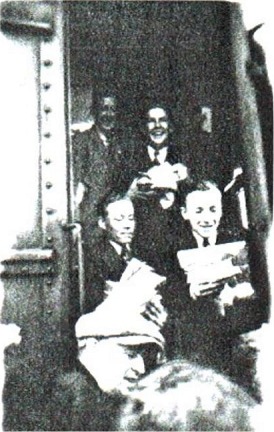
March 30, 1940 – train stop at Welseley enroute to Toronto
lower step Jack Fuller, George McIver,
mid step Sam Merrifield, top step Glen Merrifield.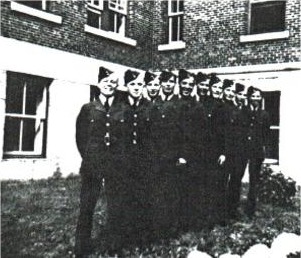
Wolseley’s ten at #1 Wireless School summer 1940.
Front to back – Jack Diller, George McIver,
Harry Tensdale, Wilson Tiller, Norman Hancock,
George Crossley, Sam Merrifield, Glen Merifield,
Jerry Pugh, Spencer Hollowell.When the second World War broke out, my brother Glen and I were working with our father in the neighboring town of Qu'Apple (Saskatchewan) where he was relocating a house on a corner lot so that a service station could be built next to the two intersecting roads. One evening, we were sitting around when we were joined by two of the local young men who had been to Regina that day and had attempted to join the army and were rejected.Their assessment of the situation was that a person had to have political pull to be accepted into the army. With that in mind and before the year end, we learned that our next door neighbor, the local Anglican Minister, M.P. Malcolm Stewart was giving classes in wireless telegraphy to prepare candidates as wireless operators for the air force which trade he had held in the Royal Flying Corps and the Royal Air Force during the First World War. ROYAL CANADIAN AIR FORCE
He agreed that we could join his class and we therefore spent the rest of the winter learning how to send and receive Morse Code. Sometime about the first of March 1940, we attended at the Regina Barracks of the Signal Corps of the Army where we took a trade test which we passed handily.
Mr Stewart was a personal friend of Wing Commander Cyril Malone the top ranking Air force Officer in Regina and in charge of all Air force recruiting. Once the Federal Election was over in mid-March, recruiting commenced in earnest with the result that we were inducted into the air force on March 29, 1940 and left for Toronto Manning Depot next morning. We spent the 30th and 31st days of March on the train between Regina and Toronto where we arrived on April 1st. There were five of us going from Wolseley on that train, being Jack Duller, Norman Hancock, George Mciver, Glen and myself and while we still retained our names, we would from that time on also be identified by our numbers which were respectively R6**** thru R6**** mine being the last and Glen's being R6****.
The train we were on stopped for a brief period in Wolseley and almost the entire town was at the station to greet us as we passed through. All manner of cakes, cookies and other goodies were shoveled on to the train for us as well as two wrist watches for Glen and I as presents from our Dad. Probably the only two available in town.
Glen is the typist and will from time to time add or express another opinion and here is the first one. Taking our medical for our induction it was discovered that Sam & I were Red Green color blind and the Medical Sergeant informed us that we could not join the Air force and left the room to report this to higher authority. He returned and gruffly told his assistant to "Put them through". This puzzled us as the rule was firm in those early days but not long after we arrived in Toronto we learned that Rev. Stewart had been called up and was the C/0 of the Recruiting depot. The affliction while common is not serious and as long as we did not take flare duty where we would have needed to distinguish very pistol flares it presented no problem. On leaving the recruiting depot, we were all given envelopes containing our records and on the outside of the envelope was typed Re: AC2 Samuel S. Merrifield in my case and in the case of all the others except Glen who was designated AC3. AC2 was the short form of Aircraftsman Second Class and there was some concern that Glen was an Aircraftsman Third Class. Once we arrived in Toronto, we learned there was no such thing as AC3 and that it had obviously been a typing error. It did, however cause some concern for a period of time.
We were taken in Motor Vehicles from the railroad station to the Canadian National Exhibition grounds where we were allocated bunks in the cow barns. On the first day we were given our uniforms and regulation kit including all necessary toilet articles except shaving cream and tooth paste which we were expected to purchase with our daily stipend of $1.55 a day. Because we had taken a trade test we were inducted as "C" group tradesmen which gave us 25 cents extra a day. We were also given large cardboard cartons into which we placed all our civilian clothing and had them addressed to be sent home to our families.
We stayed in Toronto until the 27th of April learning to march and do necessary drills and nothing much of note happened during that period. I do recall that I left one of my towels on the end of my bed to dry and promptly had it swiped. We all fell prey to numerous photographers hovering around trying to convince us to have our pictures taken in our uniforms. We were reasonably proud and all availed ourselves of their services, for a price, of course. The one other thing that sticks in my mind was the fact that the YMCA operated the canteen and a cup of coffee was ten cents as was doughnuts whereas the Salvation Army had a place on the grounds where both a doughnut and coffee could be purchased for a nickel.
Once we were allowed off the base into the city. We visited the numerous movie houses and in particular the one which had strip tease skits, the Casino I believe it was called. About half way through our stay in Toronto there was a call for volunteers to work in the Post Office and I stepped out and was accepted. From that time on I did no more marching nor drills and spent my time sorting and giving out mail. As a result of this I never received rifle drill.
Glen's memory recalls being on KP every weekend in Toronto so we never got to see Niagara Falls or other places we Westerners had heard so much about.
Finally on the morning of April 27th we were taken to the railway depot and put on the train for Montreal where No.1 Wireless School was located. When we arrived we were taken to the school which was housed in a building that had been an Institute for the blind operated by some order of nuns. There were then four more Wolseley boys at the school being Wilson Tiller, a regular force member, and George Crossley, Harry Teasdale and Spencer Hollowell, all of whom had been trained by Rev. Stewart and were members of the first entry into the school with us being the second entry. At that time there was only a field out behind the building but within a very few weeks, the heavy equipment came and prepared a proper parade ground. The station was then commanded by a Wing Commander Buck but he was shortly replaced by Group Captain Scott.
Apart from the daily morning parade, and a physical training session twice or three times a week, our time was spent in the classrooms learning radio circuitry and improving our abilities to send and receive Morse code both orally and visually. We were free Saturday afternoons and Sundays, except for those Sundays when we were obliged to go on Church Parade when the service was either Church of England for the Protestants or Roman Catholic. What Jewish boys did, I don't recall.
The school was on Queen Mary Road just west of a boys school which was immediately across the street from St. Joseph's Oratory. At the end of the block the road ran into Cote des Neiges which wound around the mountain to downtown Montreal and it was only a ten minute street car ride to Sherbrooke and Guy Streets.
Shortly after our arrival in Montreal, Norman Hancock was found to have a hernia which resulted in him having an operation and his stay in the hospital meant that he had to await the third entry to complete his training and we more or less lost track of him. He had become acquainted with Dick Lewington who remained in our class and became very friendly with us. Dick came to Canada from England as a boy in his late teens and when he joined the air force he had been working for a restaurant owner in Athens Ontario, just north of Brockville, which was close enough to Montreal to permit him to motor home occasional weekends. He owned his own car which he kept in Montreal and on a number of his trips to Athens he took us with him.
He was heavily involved with a girl, Thelma McEvoy, who lived with her parents on a nearby farm and we spent the night with them there. We would leave Montreal just after noon on Saturday and be back in time to check in just before midnight on Sunday which was the latest check in time allowable without being charged for being late.
On another occasion we took a trip to Ottawa and visited some friends of Dick's and our Aunt Queenie and Uncle Guy. I also became friendly with a classmate named Dick Schnider who had an Aunt and Uncle who lived a few blocks away in Westmount and we had several outings to their place or elsewhere with them as well as a couple of nights on the town with their daughter and her fiancé and other friends.
We were being trained as Wireless Operators Ground as opposed to Wireless Air Gunners who would ultimately be members of the aircrews and as such had minimal training in radio circuitry . Shortly after we arrived, the first of the aircrew trainees began to come and in one of the first contingents was Jerry Pugh. a lad with whom we grew up in Wolseley, until he moved away in his early teens, As children we were always sorry for him because his parents insisted that he take piano lessons which meant he had to practice the piano instead of being able to come out to play. By the time he came to Montreal, he was proficient in playing the piano which resulted in many happy hours with him providing the music. Two of his and our favorites were "Sunrise Serenade'' and "Lovers Lullaby" which he played almost as well as Frankie Carle, the composer.
When he arrived there were ten boys from Wolseley at the Wireless School at the same time being Wilson Tiller, Spencer Hollowell, George Crossley, Harry Teasdale, Norman Hancock, George Mciver, Jack Duller, Gerry Pugh, Glen and myself. On one occasion a snapshot of the ten of us was taken and was recently printed for posterity in the history book of Wolseley, published some five or six years ago. Shortly after we left, two more Wolseley boys arrived being David Stutters and Garnet Warner. Another Wolseley boy, Bill Lemke, attended that school as well as some who became aircrew as wireless air gunners, of whom our cousin, Lloyd Brown was one.
Because we had some training and had taken a trade test before joining the air force, we were promoted to the rank of Aircraftsrnan 1st Class which gave us an additional ten cents a day which brought our daily pay to $1.65. This was no small consideration at a time when cigarettes were a penny apiece and a glass of beer was a dime. We did not drink but it gave us that much more for other things.
We became familiar with the area from making route marches along the nearby streets, avenues and boulevards. These would last a couple of hours and would be seven or eight miles in all. The only time I can recall having a band was during a parade along Sherbrooke Street on the evening of July 1st when members of several armed forces units participated in celebrating Canada Day.
We were in Montreal when Italy carne into the war on the side of the Germans on June lOth 1940 and a few of us jumped into Dick Lewington's car and headed for the Italian area of the city. Just what we were going to do to show our displeasure, I do not know at this late date but in any event, we either got lost or thought better of it so nothing ever carne of it and we likely finished off in the canteen at the school.
Glen here. . . I have two recollections of #1 W.T.S., one was the food which was our first sustained bash at institutional grub and we did not think it was too good. After over four years on smaller rations overseas it does not now seem so bad. The other was a concert given us by Gracie Fields and I shall never forget the evening she sang for over two hours with her very wonderful voice.
At or about the middle of September, our course was completed and one morning all the members in the entry were paraded in one of the halls where we were informed that there was a request for fifty men to volunteer for overseas duty, Glen, Jack Duller and myself stepped forward, I believe George Mciver also offered to go but was rejected because he was of the entry who had been singled out for special training as an Instructor. I have no idea what rank was given to those staying in Canada but those of us going overseas were promoted to Leading Aircraftsmen "B" Group which brought our pay up to two dollars a day.
We were all given new uniforms but had to surrender our Khaki summer uniforms which were not used in England. Glen again. . . We were told we would get our second uniform when we got overseas. Well the RAF could not understand how we who came from the land of plenty would be so poorly outfitted. Needless to say it was many months before we got the second one but working in an office setting at Station HQ made things acceptable.
Sam and Glen Merrifield’s memoir is a substantial book with 78 pages written in March of 1989 and submitted to the Commonwealth Air Training Plan Museum in 2000. This vignette recounts the first eight pages. We intend to review the rest of their submission and hopefully provide future vignettes on the further adventures of the Merrifield brothers.
049 of 150
BCATP Aircraft - The Westland Lysander
In 1934, the British Air Ministry called for the creation of an army cooperation aircraft to replace the Hawker Hector. The Westland Aircraft Company assigned management of this project to Teddy Petter who was responsible for bringing the project to life. Competing with three other aircraft companies, Petter gained an edge by talking with Royal Air Force pilots to find out what might be best in the new aircraft. The army specifications called for tactical reconnaissance and artillery reconnaissance, photo reconnaissance and artillery observance fire in daylight up to 10 miles behind enemy lines. The specifications together with his discussions with the pilots led Petter to conclude that the aircraft required low-speed handling characteristics and Short Take-Off and Landing abilities.
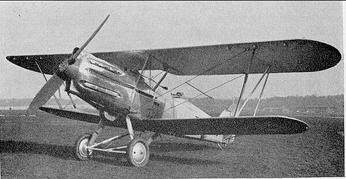
The Hawker Hector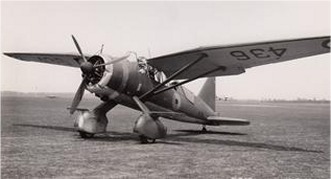
The Westland LysanderArmy co-operation and liason was a popular concept with a number of army/air forces between World War I and World War II. Advancements in aircraft technology made the concept practical to implement. The British choose the Lysander for the creation of separate aerial units to assist ground units from the air to undertake artillery spotter, reconnaissance and close air support duties for the army.
Westland settled on the Bristol Mercury XX engine to power the Lysander which was designed with high wings and fixed conventional landing gear streamlined to limit drag. The landing gear was capable of carrying light bombs and supply canisters. To increase performance, designers gave the Lysander wing slots and slotted flaps capable of automatic deployment to assist the pilot to slow the aircraft to its stall speed of 65 mph.
The Air Ministry approved production of the Lysander in September 1936. The first models came into service in June 1938. Early in the Lysander’s history, operations in Europe were handed over to the Mk. II version relegating the earlier Mk. I models to operations in India and Burma. By October 1939, four squadrons of British Lysanders were operating in Europe which were followed by another squadron pressed into service in early 1940.
Unfortunately, the Lysanders soon demonstrated, that while undertaking assigned tasks even with British fighter aircraft support, they were overwhelmed by the superior Luftwaffe air force. Its role in the evacuation of the British Expeditionary force at Dunkirk was the final straw for the Lysander in Europe. While supporting the evacuation by dropping supplies to troops trapped by the German Army, the Lysanders suffered tragic losses - 118 of the 175 deployed were destroyed. The RAF realized that a faster aircraft was required to undertake the missions with success and safety. The RAF choose the Curtis Tomahawk and North American Mustang fighters as replacements for the army cooperation role while artillery spotting duties were given to the Taylorcraft Auster. The Lysanders were relegated to coastal patrol of Britain and held in reserve to provide home defence if an invasion occurred.
In August 1941 another important role was assigned to the Lysander because of its STOL (short takeoff and landing) capabilities, ruggedness and relatively slow speeds. It became the perfect aircraft for slipping into occupied France and Belgium to land on short and rough fields on clandestine missions to drop off supplies and agents to the underground fighting forces.
Ferrying agents and spies for the Special Operations Executive (Britian’s spy agency) was undertaken by the Lysander Mk. III which was equipped with a fixed ladder to access the rear cockpit and a large drop tank for extra fuel. The Mk. IIIs were painted matte black for operations which were scheduled for one week before and one week after a full-moon as the light was required for flying. Squadrons No. 138 and 161 Squadrons dropped 101 agents and recovered 128 agents from occupied Europe. Supplies were dropped by Mk. I Lysanders. The Lysander finished out the war in Europe operating in 14 squadrons and flights providing air-sea rescue assistance to downed Royal Air Force aircrews in the English Channel.
In Canada, 104 British built Lysanders were received by the Royal Canadian Air Force in addition to another 225 that were built at the National Steel Car Company in Malton Ontario between October 1938 and August 1939. This aircraft undertook a number of tasks in Canada including flying as an army cooperation aircraft, training aircrew and providing anti-submarine and search and rescue operations on Canada’s east and west coasts. Canada’s 123 RCAF Squadron ran an Initial Training School to teach Lysander operation at Rockliffe Ontario along with No. 2, No. 110 and No. 112 Squadrons which did the same. 121 Squadron and some Operational Training units as well as the bombing & gunnery schools in the British Commonwealth Air Training Plan used the Lysander for towing targets for gunnery training. By late 1944 all Lysanders had been withdrawn from flying duties in Canada.
A total of 1786 Lysanders were built of which 224 were made under license in Canada. It was capable of carrying one pilot and one/two passengers (observer) depending on its configuration. The Bristol Mercury XX radial engine provided power for a maximum speed of 212 mph., range of 600 miles and altitude of 21,500 feet. It carried two forward firing .303 Browning machine guns in its wheel fairings and two more in the back of the cockpit for the observer. It could carry four 20 pound bombs on the fuselage and another 500 pounds of bombs on stub wings on the landing gear if installed.
British Commonwealth Air Trainng Plan
Use of the Westland Lysander at Bombing & Gunnery Schools.
No. 1 Jarvis Ontario ~ No. 2 Mossbank Saskatchewan ~ No. 3 Macdonald Manitoba ~ No. 4 Fingal Ontario ~ No. 5 Dafoe Saskatchewan ~ No. 6 Mountain view Ontario
No. 7 Paulson Manitoba ~ No. 8 Lethbridge Alberta ~ No. 9 Mon-Joli Quebec ~ No. 10 Mount Pleasant Ontario ~ No. (RAF) Picton Ontario?
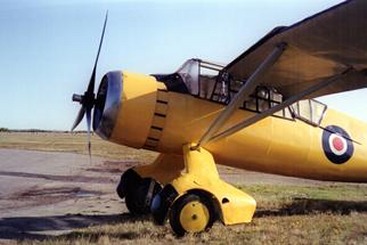
Former CATP Museum Lysander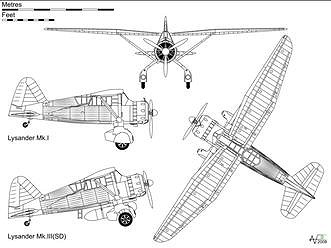
The Westland Lysander
https://en.wikipedia.org/wiki/Westland_Lysander
050 of 150
BCATP Partners - Royal New Zealand Air Force (RNZAF)
As one of the four Commonwealth Countries responsible for the creation of the British Commonwealth Air Training Plan, New Zealand and its Royal New Zealand Air Force are worthy of a Canada 150 vignette. Indeed, New Zealand’s relationship with Canada was very strong during World War II, as it was with the other BCATP partners - Australia and Britain. Operationally, the RNZAF concentrated on providing pilots and other aircrew to the Royal Air Force early in the war. With an increase in hostilities with Japan’s entrance into the World War, New Zealand took an active role in air operations in the Pacific as well as radically increasing home defence.The Royal New Zealand Air Force has its roots deeply entrenched in the Royal Air Force dating back to World War I when this country’s pilots played a significant role in the RAF’s battle with Germany. The RNZAF attained independence from the RAF in 1923 with the creation of its own national air force which came to be known as the New Zealand Permanent Air Force (NZPAF). It retained the Royal Air Force Motto "Per Ardua Asta" - "Through Adversity to the Stars." Even with independence though, many New Zealanders continued to serve with the RAF until 1950. Its greatest strength occurred in 1946 with 1000 combat aircraft at its disposal.
In World War II, the Royal New Zealand Air Force served in all theatres of war and could boast about its 15 air aces of which one is credited with 24 kills. The RNZAF also has three WWII Victoria Cross Winners including James Allen Ward – the pilot who came to fame and was awarded the medal for climbing out on the wing of his Wellington in flight to put out an engine fire. Leonard Trent was awarded the Victoria Cross for his persistence as a fighter pilot in the defence of Britain and Lloyd Trigg received the medal for a courageous battle with a U-Boat off the African coast which ultimately destroyed both his aircraft and the U-Boat. This medal was awarded based on the submarine crew’s account of the battle.
At the start of World War II, the RNZAF started with 30 Wellington Bombers with crews that were lent to the Royal Air Force as 75 Squadron. Eventually six RNZAF squadrons were attached to the RAF and Fleet Air Arm around the world. Many other New Zealanders served with RCAF and Royal Australian Air Force squadrons.
Hostile German submarine actions off the coast of New Zealand provided the impetus to build a home defence system. Japanese encroachment and capture of nearby Pacific countries resulted in a strengthening of those defences. Short of fighter aircraft, the RNZAF creatively made due by converting training aircraft and airliners into fighting planes. Harvards, Oxfords and Tiger Moths even, were fixed with guns and camouflaged. A Japanese submarine based float plane buzzing the two biggest cities in New Zealand – Auckland and Wellington - was instrumental in motivating New Zealand to enter a lend-lease contract with the United States to acquire warplanes. New Zealand was given Curtis P-40 Kittyhawks and more Harvards and Hudsons. Eventually these aircraft were replaced with more suitable combat aircraft including Corsairs and Venturas.
New Zealand was a significant partner in the Empire Air Training Plan which included Canada, South Africa and Australia in training air crew for the Allied air war. For most of World War II, New Zealand provided the Elementary Flying Training and finished off with Service Flying and other advanced training in the BCATP. At various times, New Zealand also provided training for other air crew positions at home. Aircraft types used in training were the Airspeed Oxford, North American Oxford and de Havilland Tiger Moth as well as Hawker Hinds, Vickers Vincents and Avro Ansons. New Zealand made major contributions to the British Commonwealth Air Training Plan as well.
The significance of New Zealand’s contribution to the Commonwealth air effort can be gauged by the actions outlined below:
World War II for New Zealand
- New Zealand population in 1940 – 1,600,000
- 140,000 men and women of New Zealand served in its armed forces.
- 104,000 were enlisted in 2NZEF (No. 2 New Zealand Expeditionary Force)
- 36,000 served in British or New Zealand naval and air forces
- New Zealand suffered 11,928 casulaties
- In 1945, the RNZAF was 41,000 men and women strong of which 10,000 were serving in the Royal Air ForceWorld War II for the Royal New Zealand Air Force
- 2,910 pilots graduates of New Zealand elementary flying training schools were sent to Canada for Service Flying Training – unlike RAF trainees, New Zealand trainees were integrated with Australians and Canadians into Royal Canadian Air Force run schools.
- 2,700 wireless operators were trained in the BCATP
- 1,800 navigators were trained in the BCATP
- 500 bomb-aimers were trained in the BCATP
- 6,900 of the 131,000 (both numbers approximate) or 5.3% of those trained in the BCATP were members of the RNZAF
- 1,521 New Zealand pilots were trained at home to undertake home operations, provision of training for others and as well to serve as staff pilots
- before the BCATP was up to full-strength, New Zealand trained 183 air observers and 395 air gunners for the Royal Air Force
- in 1943, all RNZAF wireless, navigator and air gunner training reverted back to New Zealand
- today, the RNZAF has 51 aircraft and approximately 2,500 personnel including civilians to undertake maritime patrol and transport duties for the Royal New Zealand Nary and New Zealand Army.https://en.wikipedia.org/wiki/Royal_New_Zealand_Air_Force
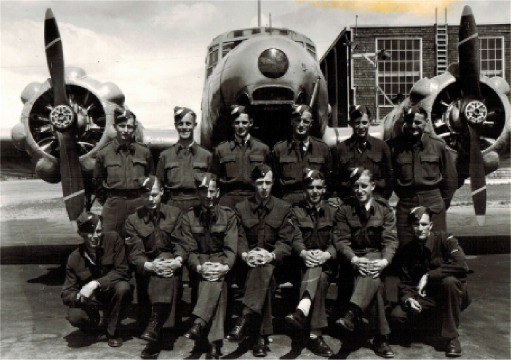
Course 104B No. 8 B&G Lethbridge Canadians and New Zealanders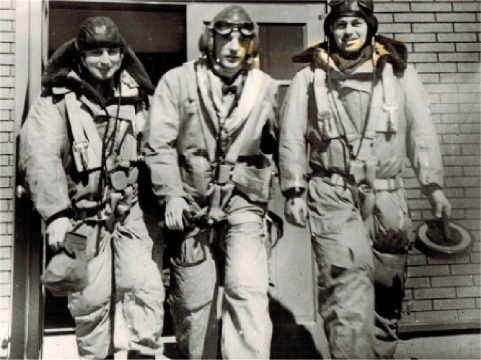
New Zealand Airmen at BCATP Bombing and Gunnery School.
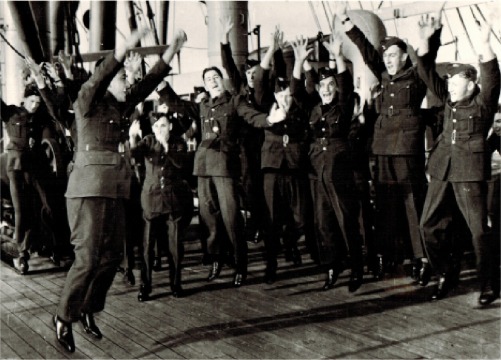
New Zealand airmen practice their Maori Haka Dance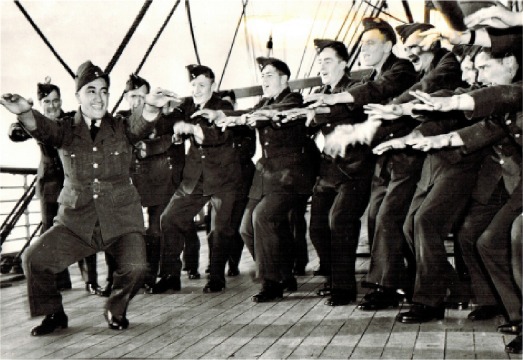
New Zealand airmen doing the Maori Haka Dance.
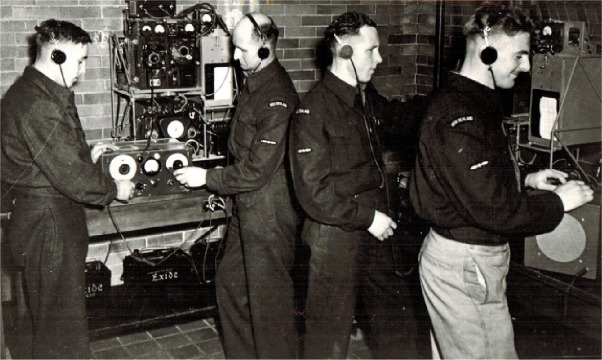
New Zealanders training as wireless operators in Canada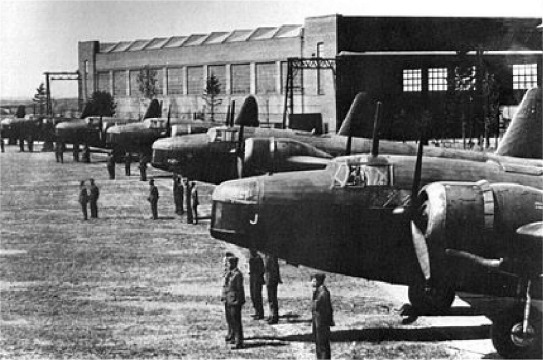
RNZAF Wellington Bombers in England 1939
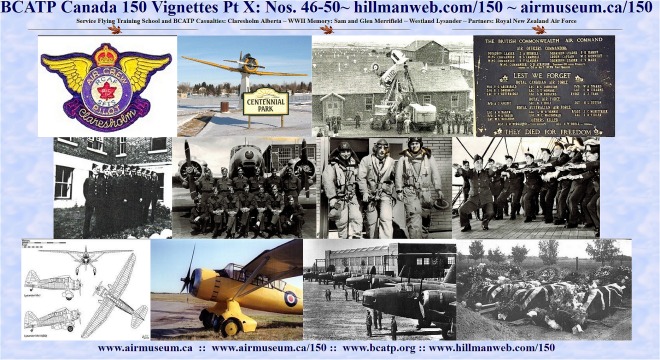
Click for full-size collage posterBCATP Vignettes are Continued in PART XI: Nos. 51-55
|
As You Were . . . Military Tributes |
Hillman WWII Tributes www.hillmanweb.com/war |
Ex-Air Gunners Association Magazines |
![]()
![]()
![]()
Webmaster:
William G. Hillman
BILL
& SUE-ON HILLMAN ECLECTIC STUDIO
Editor
and Webmaster Bill Hillman ~ Copyright 1999-2023